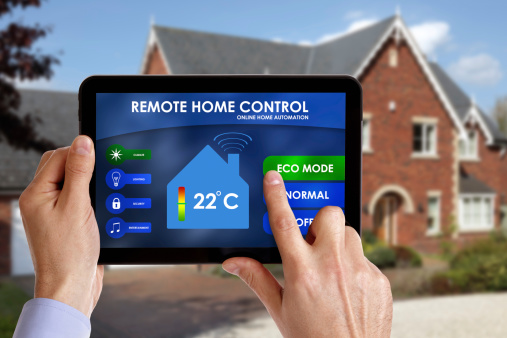Objects used to be inanimate, and that was fine because it was easy to point the finger when things didn’t go according to plan. However, today there’s a seemingly endless capacity for equipping everyday household objects with technology that enables them to perform a jaw-dropping array of tasks – thereby allowing increasingly less runway for human-initiated mishaps.
Underlying this creeping infusion of technology is a paradigm known as ubiquitous or pervasive computing. First introduced in 1988 by Mark Weiser, Chief Technologist of the Xerox Palo Alto Research Center (PARC), his vision was that the computer would become so naturally embedded in our lives that we would end up using it without even realizing we were tapping into technology.
“Ubiquitous computing names the third wave in computing, just now beginning. First were mainframes, each shared by lots of people. Now we are in the personal computing era, person and machine staring uneasily at each other across the desktop. Next comes ubiquitous computing, or the age of calm technology, when technology recedes into the background of our lives.” – Mark Weiser
The devices that quietly serve up ubiquitous computing are not PC’s or smartphones, but are miniscule, often invisible devices that are either mobile or embedded in everyday things, such as cars, appliances, tools, clothing and all manner of consumer goods – each conveying their valuable nuggets of data through the Internet of Things. Welcome to the age of wearable technology, smart homes, smart cities and smart just-about-anything.
Imagine getting home to find the temperature, lighting, entertainment and window shades magically adjusted to your preferences. Or visualize a city where climate, humidity, levels of carbon monoxide and nitrogen dioxide, ambient sound, light and vibration are captured and monitored to improve safety, efficiency and quality of life while reducing waste.
These things that think around us and for us are emerging game-changers that raise the bar on the quality of life and efficiency of businesses, but also raise big questions. The data itself is different. It’s based on context – the information about a user gathered from sensors in the devices. This context is changing so rapidly that capturing and protecting the data has to happen in real-time. And then there’s the fact that mobile and ubiquitous devices face far greater physical threat and subsequent downtime than traditional computing devices.
So what does this mean for next-generation data protection solutions? As demonstrated by EMC’s recently announced Enterprise Hybrid Cloud solution, it’s the seamless integration and self-service capabilities of services such as data protection that enables the mobility, agility and reliability of critical IT functions. Coupled with the all-encompassing reach of a continuum of data protection service levels, from continuous availability and replication to snapshots, backup and archive, the foundational building blocks to the future are available today.
